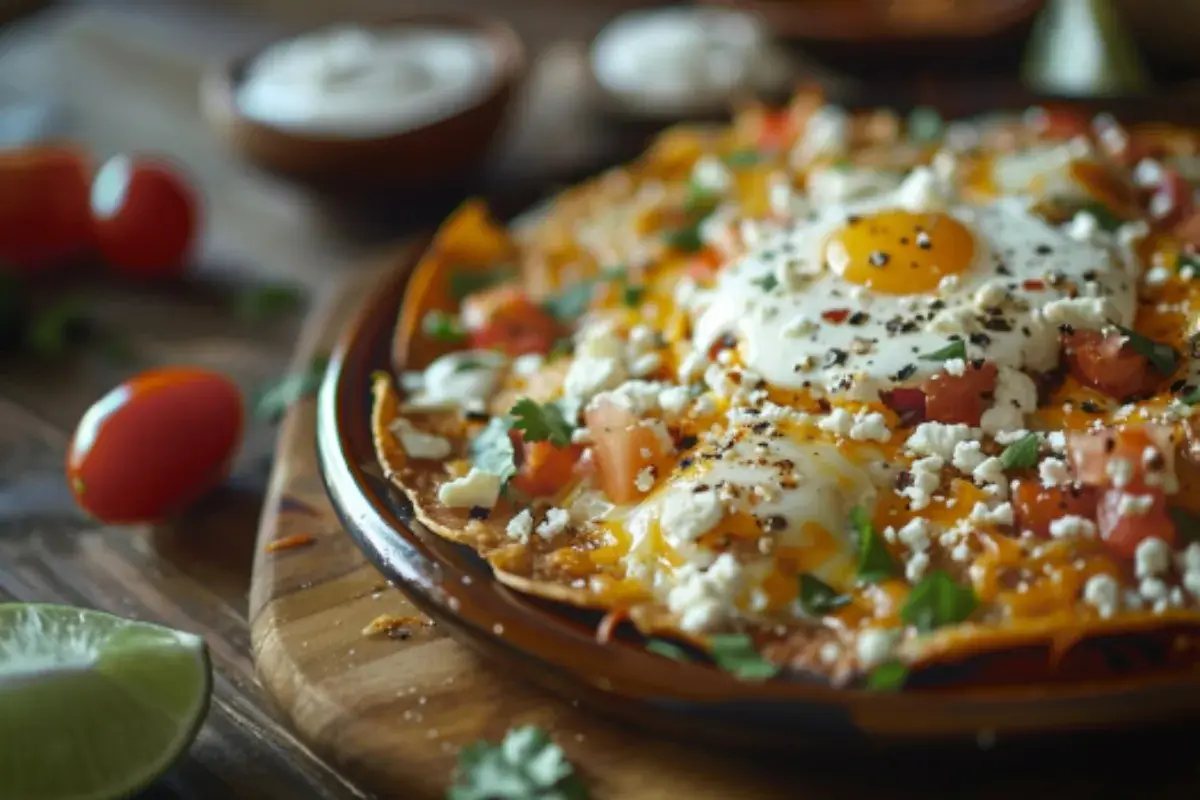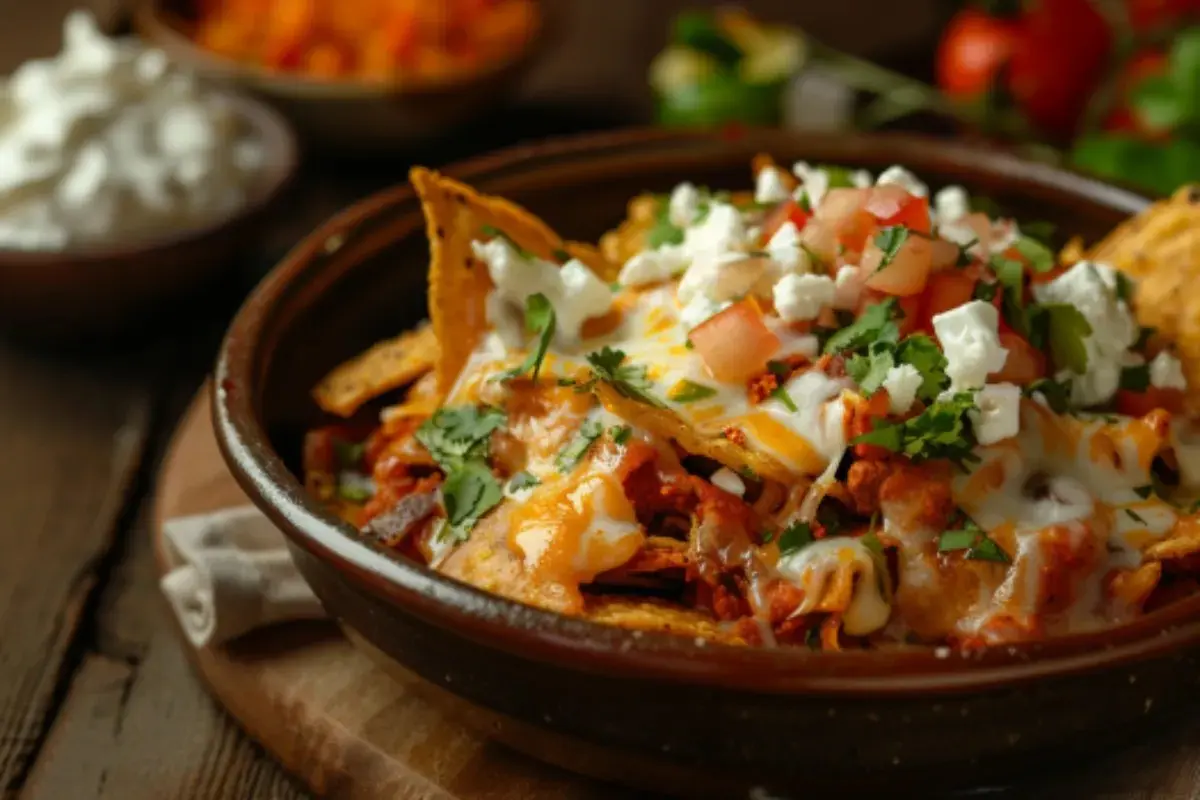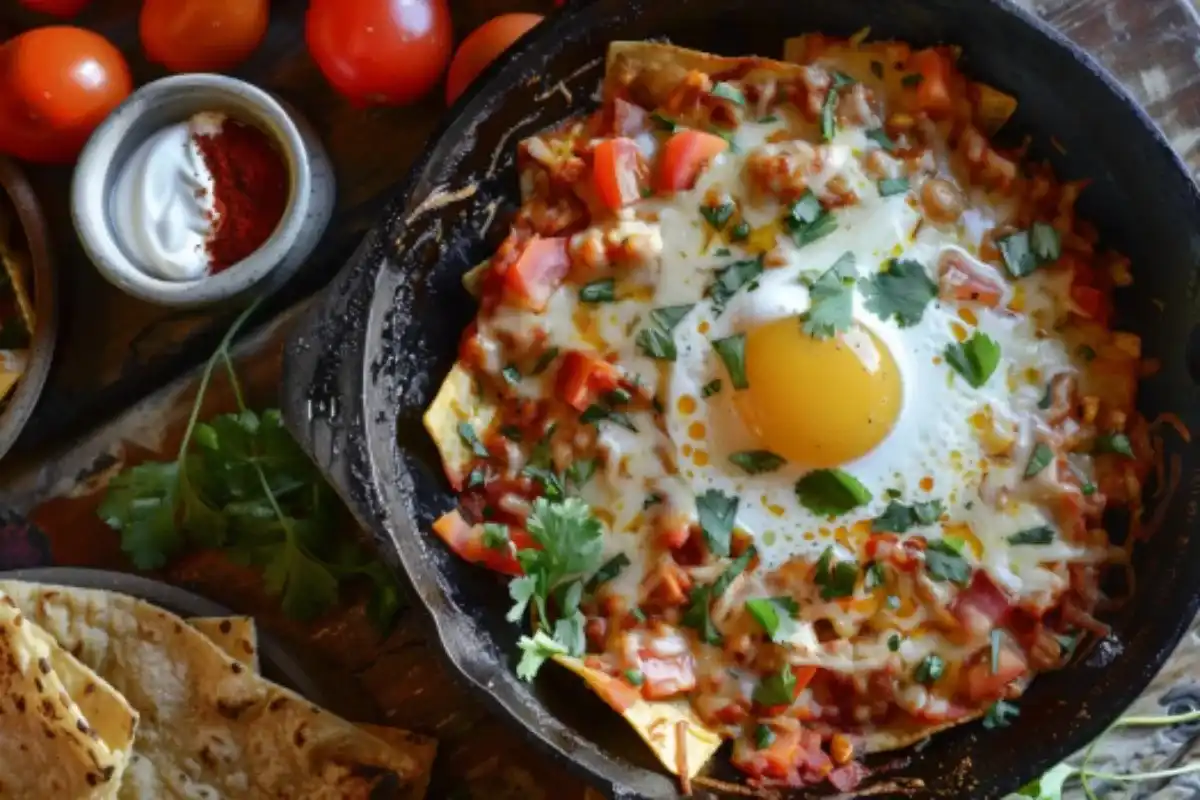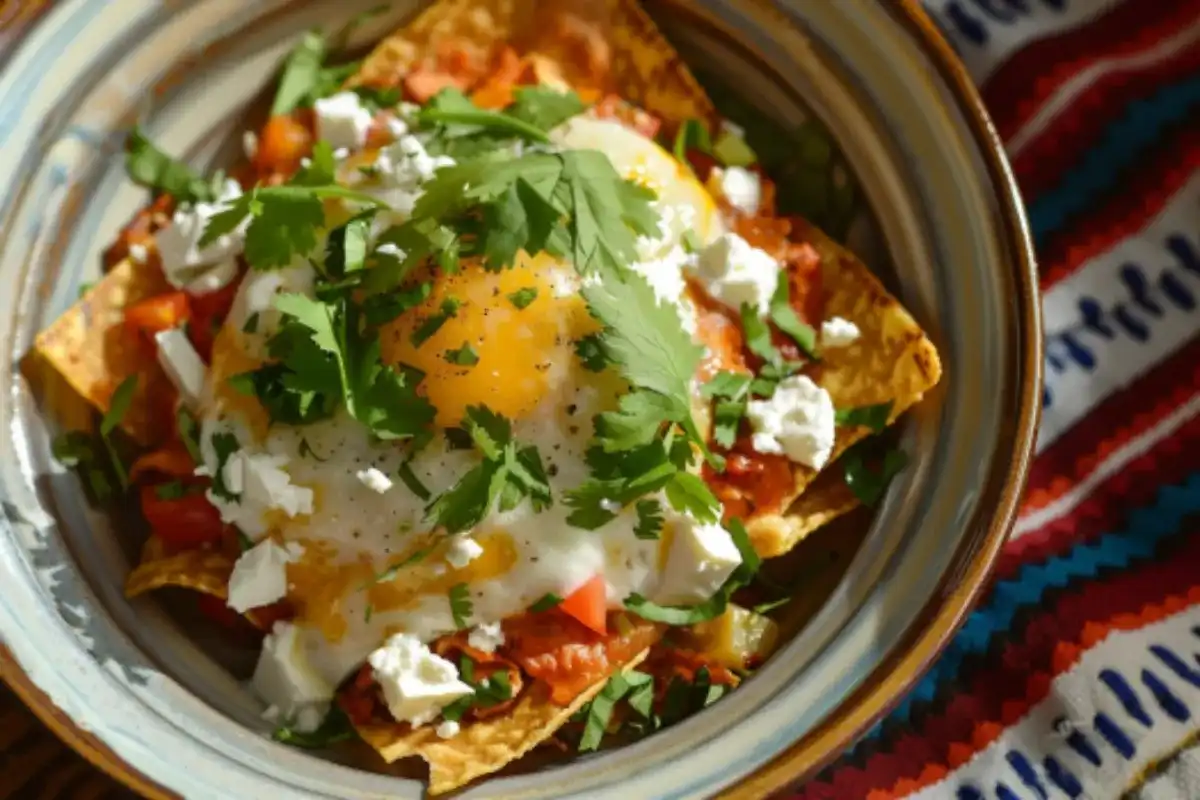Mexican cuisine is a tapestry of vibrant colors, bold flavors, and a history steeped in tradition. When it comes to breakfast, few dishes compare to the delicious and hearty combinations of migas and chilaquiles. These two dishes, both centered around tortillas and commonly served in Mexican and Tex-Mex breakfasts, are often confused for one another. But while they share ingredients, their preparation, flavor profiles, and textures make them distinctly different. For a deeper dive into the history of Mexican cuisine, including the evolution of migas and chilaquiles, explore the roots of these iconic dishes.
In this comprehensive guide, we’ll explore the rich history of migas and chilaquiles, their origins, the specific techniques used to create each dish, their cultural significance, and how each dish is enjoyed across various regions. We’ll also dive into the ingredients that make these dishes special, the culinary variations, and the unique flavors that define them. Let’s take a journey into the world of Mexican breakfast cuisine and uncover what truly sets migas and chilaquiles apart.
The Origins of Migas and Chilaquiles

The History of Migas
The word “migas” means “crumbs” in Spanish, and the dish has its origins in Spain. In its earliest form, migas was a simple, rustic dish made from stale bread that was moistened with water or milk and cooked with fat, often in the form of lard or olive oil. It was a practical way for shepherds and peasants to use up old bread, ensuring nothing went to waste. This dish, known as Migas del Pastor, was particularly popular in regions like Extremadura and Andalusia.
When migas made their way to Mexico during the Spanish colonization, the dish evolved significantly. Instead of using bread, Mexican cooks began using one of their most iconic ingredients: corn tortillas. The tortillas were cut into strips, fried until crispy, and then combined with eggs and other ingredients. Thus, Mexican migas were born. Over time, the dish continued to evolve, with different regions of Mexico and the southern United States adding their own touches, giving rise to the Tex-Mex migas that are popular today.
The History of Chilaquiles
While migas originated in Spain, chilaquiles have deep roots in pre-Columbian Mexico. The word chilaquiles comes from the Nahuatl language (the language of the Aztecs) and means “chilis and greens.” This dish dates back centuries and has long been a part of Mexican households. In its earliest form, chilaquiles were a way to use up stale or leftover tortillas. By frying the tortillas and simmering them in salsa, cooks created a dish that was hearty, filling, and perfect for breakfast or brunch.
Chilaquiles have always been a versatile dish. Whether made with green salsa (salsa verde) or red salsa (salsa roja), the dish offers a comforting blend of soft, slightly crispy tortillas that soak up the flavors of the salsa. Traditionally, chilaquiles were served with simple toppings like crema, queso fresco, and sometimes chicken. Over time, as the dish spread across Mexico and beyond, it has evolved into countless regional variations, each with its own take on this timeless favorite.
Key Differences in Ingredients
Migas Ingredients
Migas, particularly the Tex-Mex version, are a breakfast dish that centers around scrambled eggs and tortillas. Here’s a breakdown of the most common ingredients used in migas:
- Eggs: Scrambled eggs form the base of migas. They are light and fluffy, mixing beautifully with the crispy tortillas.
- Tortillas: Corn tortillas are typically used in migas, but the tortillas are cut into strips or small pieces and fried until crispy.
- Onions and Jalapeños: Onions and jalapeños add a touch of spice and depth to the dish, balancing out the richness of the eggs and tortillas.
- Tomatoes: Some versions of migas include diced tomatoes, which add brightness and acidity.
- Cheese: Cheese is a key component in many Tex-Mex migas. Cheddar or Monterey Jack are popular choices, adding a creamy, melted texture to the dish.
- Optional Add-Ins: Many variations of migas include extras like chorizo, avocado, or cilantro.
The ingredients in migas are straightforward, but their simplicity is part of their charm. The dish is all about the crispy, fried tortillas combining with the eggs to create a satisfying texture. For chilaquiles verdes, you’ll want to make a tangy authentic salsa verde with tomatillos, which adds a bright, acidic flavor.
Chilaquiles Ingredients
Unlike migas, which are centered around eggs, chilaquiles revolve around tortillas and salsa. Here’s what you’ll typically find in chilaquiles:
- Tortilla Chips: The base of chilaquiles is tortilla chips, which are fried until crispy. While some recipes call for store-bought chips, traditional chilaquiles are made with freshly fried corn tortillas.
- Salsa: Salsa is the defining ingredient in chilaquiles. Green salsa (salsa verde) is made from tomatillos and has a tangy, slightly spicy flavor. Red salsa (salsa roja) is made from tomatoes and has a sweeter, more earthy flavor.
- Cheese: Chilaquiles are typically topped with crumbled queso fresco or cotija, which adds a salty, tangy flavor.
- Crema: Mexican crema, a rich and tangy sour cream, is often drizzled on top of chilaquiles to add creaminess and balance the spice.
- Optional Toppings: While traditional chilaquiles are simple, many versions include toppings like shredded chicken, fried eggs, avocado, and beans.
The key to great chilaquiles is balancing the textures: the crispy tortilla chips and the soft, saucy layers that develop as the chips absorb the salsa.
Regional Variations of Migas and Chilaquiles

Migas Across Regions
Migas are popular in many parts of Mexico, but the dish is particularly beloved in the southern United States, especially in Texas. In Texas, Tex-Mex migas have become a breakfast staple, often served in breakfast tacos or alongside refried beans and tortillas.
- Tex-Mex Migas: In Texas, migas are typically made with scrambled eggs, fried corn tortillas, and a variety of add-ins like jalapeños, onions, and cheese. They’re often served with salsa and warm tortillas on the side. Some restaurants in Texas serve migas as a filling for breakfast tacos, combining the best of both worlds: scrambled eggs and crispy tortillas wrapped in a soft flour tortilla.
- Mexican Migas: In Mexico, migas are more rustic and often simpler. They may not include cheese or extras like jalapeños, but the combination of fried tortillas and eggs remains the foundation of the dish.
Chilaquiles Across Regions
Chilaquiles are a staple in Mexican households, and the dish varies significantly depending on the region. In Mexico, chilaquiles are often served for breakfast, but they can also be enjoyed as a lunch or dinner dish.
- Chilaquiles Verdes: In many regions of Mexico, chilaquiles verdes are made with green salsa, giving the dish a bright, tangy flavor. Tomatillos are the base of this salsa, and it is typically less spicy than its red counterpart.
- Chilaquiles Rojos: Chilaquiles rojos, made with red salsa, are a heartier, earthier version of the dish. The red salsa is made with ripe tomatoes and can be spicier, depending on the type of chiles used.
- Chilaquiles with Chicken: In central Mexico, it’s common to add shredded chicken to chilaquiles to create a more filling meal. This version is often served with black beans or refried beans on the side.
- Chilaquiles Norteños: In northern Mexico, chilaquiles may be topped with fried eggs and served with a side of carne asada, making it a more substantial meal.
The versatility of chilaquiles makes it one of the most beloved breakfast dishes in Mexico, with each region adding its own twist.
Cooking Methods and Techniques
How to Make Migas
The key to great migas is in the balance of textures. The tortillas need to be crispy, the eggs light and fluffy, and the add-ins well-seasoned. Here’s a step-by-step guide to making traditional Tex-Mex migas:
- Fry the Tortillas: Start by cutting corn tortillas into strips or small pieces. Heat oil in a skillet and fry the tortillas until crispy and golden. Remove them from the skillet and set aside.
- Sauté the Vegetables: In the same skillet, sauté onions and jalapeños until soft. Add tomatoes for extra brightness.
- Scramble the Eggs: Crack the eggs into the skillet and scramble them with the vegetables. Cook until the eggs are just set.
- Combine the Ingredients: Add the crispy tortilla strips back into the skillet and gently fold them into the eggs. The tortillas should remain crispy, adding texture to the dish.
- Add Cheese and Serve: Sprinkle the top with cheese and serve with salsa and tortillas on the side.
Migas are best enjoyed immediately, while the tortillas still retain their crunch.
How to Make Chilaquiles
Chilaquiles are all about balance. The tortilla chips need to soak up the salsa but still retain some of their crunch. Here’s how to make chilaquiles verdes:
- Fry the Tortilla Chips: Start by cutting corn tortillas into triangles and frying them until crispy. You can also use store-bought tortilla chips for convenience.
- Make the Salsa Verde: Roast tomatillos, garlic, and chiles until softened, then blend them into a smooth salsa. Add salt and cilantro for extra flavor.
- Simmer the Chips in Salsa: In a large skillet, heat the salsa and add the fried tortilla chips. Gently toss the chips in the salsa, making sure they are evenly coated. Simmer for a few minutes until the chips start to soften, but not too much—they should still retain some crunch.
- Add Toppings and Serve: Top the chilaquiles with crumbled queso fresco, crema, and optional extras like shredded chicken or a fried egg.
Chilaquiles are typically served with refried beans and are a great dish to share at a family breakfast or brunch.
The Cultural Significance of Migas and Chilaquiles

Migas in Tex-Mex Culture
In Texas, migas have become a symbol of Tex-Mex breakfast culture. The dish is often served at diners and taquerias, especially as part of a hearty breakfast taco. Texans love to wrap scrambled eggs and fried tortillas in warm flour tortillas, creating a portable and filling breakfast that’s perfect for busy mornings.
Migas are also a common dish to make at home, especially on weekends when families come together for breakfast or brunch. The dish’s simplicity and versatility make it easy to customize, and many families have their own versions, adding ingredients like chorizo, beans, or avocado.
Chilaquiles in Mexican Households
Chilaquiles, on the other hand, are deeply rooted in Mexican households. The dish has long been a way to use up stale tortillas, making it a practical and delicious solution for leftovers. Chilaquiles are often served at breakfast, but they’re also a common dish for lunch or dinner, especially when topped with chicken or eggs.
In Mexican culture, chilaquiles are seen as a comforting dish, often made by grandmothers and passed down through generations. The dish is simple but flavorful, and it embodies the spirit of Mexican cooking: using simple ingredients to create something truly special.
Flavor Profiles and Serving Suggestions
Migas Flavor Profile
Migas offer a satisfying combination of savory, crispy, and slightly spicy flavors. The fried tortilla strips provide a crunchy contrast to the soft, fluffy eggs, while the jalapeños and onions add a touch of heat and complexity. Cheese melts into the eggs, adding creaminess, and salsa on the side offers a bright, tangy finish.
- Serving Suggestions for Migas: Migas are often served with salsa, refried beans, and warm tortillas on the side. Some people enjoy adding avocado or a squeeze of lime for extra flavor.
Chilaquiles Flavor Profile
Chilaquiles are all about balance. The tortilla chips, once crispy, soften slightly as they absorb the salsa, creating a dish that’s both crunchy and saucy. The flavor of chilaquiles depends heavily on the salsa used: salsa verde is tangy and slightly spicy, while salsa roja is sweeter and more savory. Toppings like queso fresco and crema add a creamy, tangy element that balances the spice of the salsa.
- Serving Suggestions for Chilaquiles: Chilaquiles are typically served with refried beans or black beans, and they can be topped with extras like shredded chicken, a fried egg, or avocado. They are often enjoyed with a side of fresh fruit or a simple green salad.
Final Thoughts – Which Dish Should You Try?
Both migas and chilaquiles are delicious, versatile dishes that offer a unique taste of Mexican and Tex-Mex breakfast cuisine. If you love scrambled eggs and crispy tortillas, migas might be the dish for you. On the other hand, if you prefer the saucy, comforting flavors of tortillas simmered in salsa, chilaquiles are sure to satisfy.
Ultimately, the best way to decide between migas and chilaquiles is to try both! Whether you enjoy them for breakfast, brunch, or even dinner, these dishes are sure to become a favorite in your household.
Frequently Asked Questions
1. Can you make migas and chilaquiles with store-bought tortilla chips?
Yes, you can use store-bought tortilla chips for both migas and chilaquiles, though traditionally, freshly fried corn tortillas are used. Using store-bought chips can save time and still deliver great flavor, especially in chilaquiles where the chips are simmered in salsa.
2. Are migas and chilaquiles served with the same toppings?
Migas are often served with salsa on the side and sometimes include toppings like avocado, cheese, and cilantro. Chilaquiles, on the other hand, are typically topped with salsa, crema, queso fresco, and sometimes shredded chicken or a fried egg.
3. Can I make a vegan version of migas or chilaquiles?
Yes, both dishes can be adapted to a vegan version. For migas, you can replace the eggs with tofu scramble and skip the cheese. In chilaquiles, simply ensure that your salsa and toppings, like avocado and beans, are plant-based.
4. What is the best salsa to use for chilaquiles?
It depends on your preference. Salsa verde made with tomatillos gives a tangy, slightly spicy flavor, while salsa roja made with tomatoes is sweeter and milder. Both work well and can be chosen based on your taste.
Conclusion

